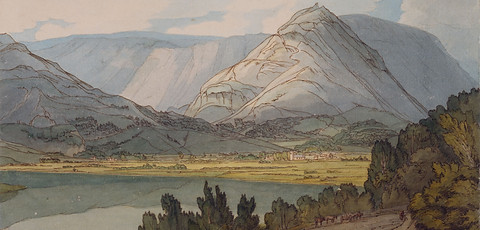
PhD Students
We have a thriving community of PhD students and are actively looking to recruit more. PhD students can be based in any department within the Faculty of Arts & Social Sciences or the School of Computing & Communications, they are frequently inter-disciplinary and have supervisors from more than one department. Many also involve working with the very large collection of digital resources that we have available. For more information please contact Ian Gregory or any member of the DH group.

Training
& Resources
Teaching & Training
We offer a variety of training, with options for students, researchers, practitioners, and anyone who’s interested in learning more about Digital Humanities methods.
MA Students
Lancaster offers an MA in Digital Humanities within the Department of History and we have plans to expand this further. For any enquiries into the MA programme please contact Ian Gregory.
UG & PG Research Internships
The DH Centre offers opportunities to acquire a wide range of digital and transferable skills related to cutting-edge digital methods. The internships offer the chance to work closely in a highly collaborative environment with the projects hosted at the Centre. For more information on these contact Patricia Murrieta-Flores.
Workshops and Seminars
We also run a range of shorter workshops and seminars for people who think they might be interested in certain approaches or methods. Please check back for information about future events.
Summer Schools
In recent years, we have run a Spatial Humanities Summer School and we also offer short courses as part of the Lancaster Summer Schools series. These are held in Lancaster every July. Staff also contribute to a range of other summer schools including the Digital Humanities Summer Institute in Victoria, Canada, and the Digital Humanities Summer Institute in Cork, Ireland.
Our Resources
We are lucky to have access to some major digital collections and the software tools to analyse them. Most of these can be made available to students.
Textual Sources
We have access to newspapers and similar sources covering almost the entire period from the beginning of printing in 1473 until the 20th century. These are usually available through CQPweb to allow corpus-based analysis, rather than simply through standard web interfaces. These include:
EEBO contains over 146,000 unique titles from the 15th to 18th century.
ECCO contains more than 32 million pages of text and more than 205,000 individual volumes.
The collection has more than 160 newspaper titles - approximately 5.5 million pages.
A project from our Department of Linguistics to study the newsbooks of the mid-17th century.
The printed reports that accompanied the British and Irish censuses from 1800-1937.
CLDW consists of 80 manually digitised and annotated texts from 1622 to 1900.
The collection contains a machine ready corpus with 168 reports complied between 1579 and 1585.
Find out more about our collections of textual sources, including Early English Books Online.
Explore our quantitative resources for students, including maps and data.
See our software packages - many of which have been developed at Lancaster.
Quantitative Sources
Our resources include:
Migration data from a large sample of genealogical data of migrations within Britain by people born from 1750-1930. This was the data set that was used to produce Colin Pooley and Jean Turnbull’s (1998) Migration and Mobility in Britain since the Eighteenth Century. (UCL Press). These are suitable for analysis within GIS.
Agricultural Returns data (The National Archives series MAF68) which provide detailed information on crops and livestock on a parish-by-parish basis. We have transcriptions of this for a range of counties for 1870, 1881, 1891, 1901 and 1911. These can be geo-referenced for mapping and spatial analysis.
This major historical GIS includes most of the recurrent census, vital registration, and other data published in the 19th and 20th centuries linked to the boundaries used to publish them.
We have similar material for Ireland. This was used in our Troubled Geographies: A spatial history of religion and society in Ireland project.
ICeM contains the anonymised microdata of all of the individual-level census data from 1851 to 1911 is also available.
We also use:
The Subaltern Recogito project: an annotated corpus of maps produced in sixteenth-century Mexico for a series of reports known as the Relaciones Geográficas de Nueva España (RGs). These annotated maps and associated data will be made available here soon.
The Pelagios in the Indian Subcontinent project annotated a corpus of colonial maps produced in the eighteenth, nineteenth and twentieth centuries in India. The gazetteer produced as a result of this project, featuring automatically and manually assigned place-names, will be made available here shortly.
Software
As well as a wide range of commercial and free open source packages, we also have a range of software packages that have been developed or enhanced at Lancaster that are highly relevant to digital humanities.
We also have a range of tools for conducting Geographical Text Analysis. Please contact Ian Gregory for more details.
Corpus analysis system that enables us to work with very large corpora, in excess of a billion words.
#LancsBox provides another corpus analysis program that allows the analysis of large corpora.
We have also developed a version of the Edinburgh Geoparser suitable for concordance geoparsing.
An online platform for the semantic annotation of place references in images, texts and tables.
A search service for geospatially annotated online content in the Humanities.



.jpg)
.jpg)



